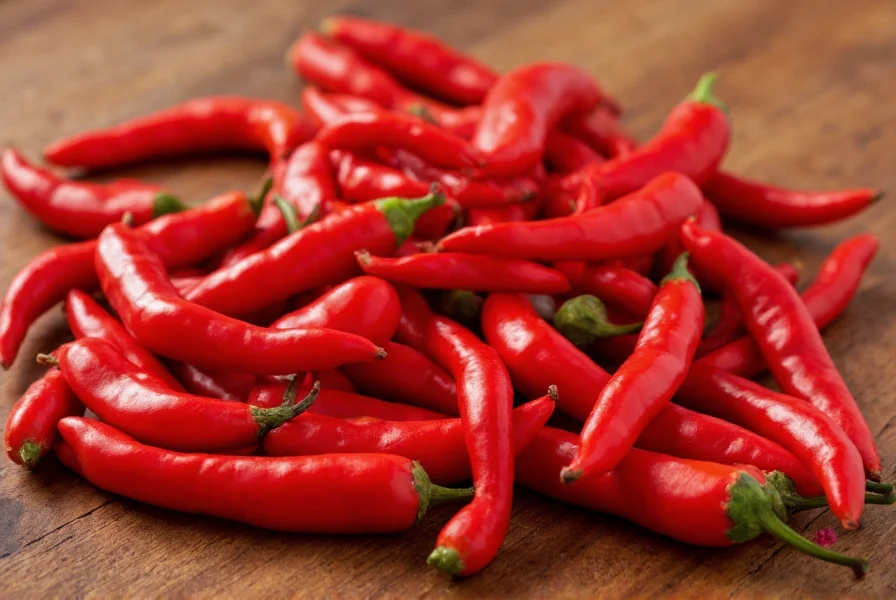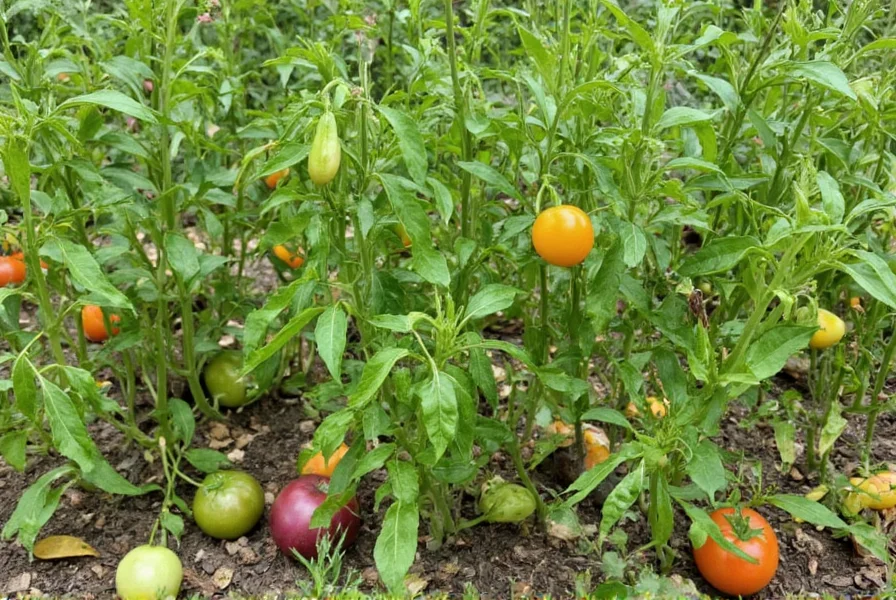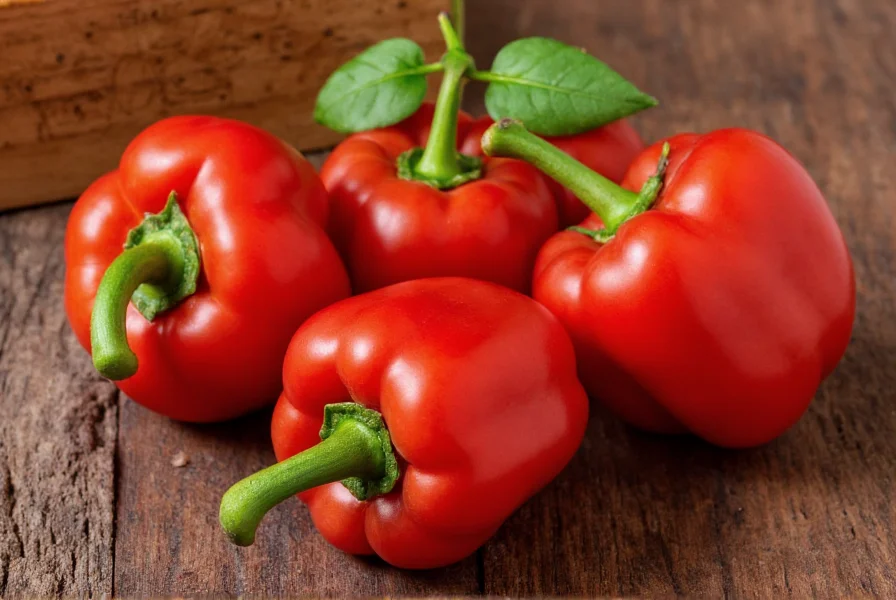Ajvar, often called the 'Balkan caviar,' has been a staple condiment across Southeastern Europe for generations. At the heart of this beloved spread lies the ajvarski pepper—a specific type of sweet red pepper cultivated for its exceptional qualities in traditional preparation methods. Understanding these peppers reveals why homemade ajvar differs significantly from commercial versions found in stores.
Origin and Cultural Significance
The term 'ajvarski' directly connects to 'ajvar,' deriving from the Turkish word 'havyar,' meaning caviar. This linguistic clue highlights how highly these peppers and the resulting relish are valued in Balkan culinary traditions. In countries like Serbia, North Macedonia, and Bosnia and Herzegovina, ajvar preparation represents more than just cooking—it's a seasonal ritual often involving entire families during late summer and autumn harvests.
Traditional ajvarski peppers have been cultivated in the region for centuries, with specific varieties adapted to local growing conditions. The most prized types include the roga (meaning 'horn' in Serbian) peppers from the Niš region of Serbia, known for their elongated shape and deep red color when fully ripe. These heirloom varieties contain the perfect balance of sugars and moisture content needed for authentic ajvar production.
Physical Characteristics and Flavor Profile
Ajvarski peppers typically measure 15-20 cm in length with a distinctive curved or horn-like shape. Their thick walls (approximately 5-7 mm) provide substantial flesh that roasts beautifully without becoming watery. When fully mature, they develop an intense red color that translates to the vibrant hue of finished ajvar.
| Characteristic | Ajvarski Pepper | Standard Bell Pepper |
|---|---|---|
| Wall Thickness | 5-7 mm | 3-4 mm |
| Shape | Elongated, curved 'horn' | Blocky, square |
| Sugar Content | Higher (8-10%) | Moderate (6-8%) |
| Moisture Content | Optimized for roasting | Higher, can make ajvar watery |
The flavor profile of properly ripened ajvarski peppers features a complex sweetness with subtle earthy notes and minimal bitterness. When roasted, these peppers develop rich caramelized flavors that form the foundation of traditional ajvar. Unlike standard bell peppers found in supermarkets, ajvarski varieties maintain their structure during the slow roasting process essential to authentic preparation.

Regional Varieties Across the Balkans
Different regions have developed their preferred varieties for ajvar production:
- Serbian 'Roga' peppers from the Nišava Valley—considered by many as the gold standard for ajvar production
- Macedonian 'Pindzur' peppers—slightly smaller with concentrated sweetness
- Croatian 'Orašac' peppers from Slavonia region—known for their balanced flavor profile
- Bosnian 'Ajvarčić' varieties—often featuring a subtle smokiness when roasted
While these regional differences exist, all traditional ajvarski peppers share the essential characteristics needed for proper ajvar: thick walls, high sugar content, and low moisture that prevents the final product from becoming watery.
Culinary Applications Beyond Ajvar
Though primarily associated with ajvar production, these versatile peppers serve multiple purposes in Balkan cuisine:
- Roasted and served as prženje (a traditional side dish)
- Stuffed with rice and meat for punjene paprike
- Preserved in oil for winter consumption
- Added to stews and soups for natural sweetness
- Used in traditional egg dishes like štrukle
The unique sugar-to-moisture ratio of ajvarski peppers makes them particularly valuable for canning and preserving, as they maintain texture and flavor better than standard bell peppers during processing.
Growing Conditions and Availability
Ajvarski peppers thrive in the specific climate conditions of the Balkan region—warm summers with significant temperature variation between day and night. These heirloom varieties typically require 80-90 days to reach full maturity and develop their characteristic deep red color.
In their native regions, farmers traditionally plant ajvarski peppers in April-May and harvest from August through October. The extended growing season allows sugars to develop fully while maintaining structural integrity. Outside the Balkans, gardeners seeking authentic ajvar can grow these varieties in similar climate zones (USDA zones 6-9) with proper attention to soil conditions and watering practices.

Nutritional Benefits
Beyond their culinary value, ajvarski peppers offer significant nutritional advantages. Like all red bell peppers, they contain high levels of vitamin C (nearly three times more than oranges by weight), vitamin A, and various antioxidants. The roasting process used in ajvar preparation actually increases the bioavailability of certain nutrients while creating new beneficial compounds through the Maillard reaction.
Traditional ajvar made with ajvarski peppers provides:
- High concentration of carotenoids, particularly lycopene
- Natural capsaicinoids (non-spicy varieties) with anti-inflammatory properties
- Dietary fiber from the thick pepper walls
- Healthy fats when prepared with sunflower or olive oil
Substitutes for Authentic Ajvarski Peppers
Outside the Balkan region, finding true ajvarski peppers can be challenging. When authentic varieties aren't available, consider these alternatives for making traditional ajvar:
- Cubanelle peppers—offer similar sweetness and wall thickness, though slightly milder in flavor
- Italian frying peppers—provide good structure and moderate sweetness
- Red bell peppers with thick walls—look for varieties labeled 'roasting peppers' or 'grilling peppers'
- Combination approach—use 70% thick-walled red bell peppers with 30% roasted eggplant to compensate for lower sugar content
When substituting, aim for peppers with the thickest possible walls and deepest red color. The sugar content is crucial—peppers that register 8-10% on a refractometer (Brix scale) will produce the best results. Avoid waxed supermarket peppers, as the coating can affect the roasting process and final flavor.
Preserving Traditional Methods in Modern Kitchens
While traditional ajvar preparation involves open-fire roasting to achieve the distinctive smoky flavor, modern home cooks can replicate these results using alternative methods. The key is slow roasting at low temperatures (150-170°C) for extended periods (45-60 minutes) to caramelize sugars without burning the delicate skins.
Authentic ajvarski peppers require minimal additional ingredients when prepared traditionally—typically just peppers, eggplant, garlic, sunflower oil, and salt. The quality of the final product depends almost entirely on the pepper variety and ripeness. Commercial ajvar often contains vinegar, sugar, or preservatives to compensate for using inferior pepper varieties, resulting in a product that lacks the nuanced flavor of traditionally prepared ajvar.
Frequently Asked Questions
What makes ajvarski peppers different from regular bell peppers?
Ajvarski peppers have significantly thicker walls (5-7mm compared to 3-4mm in standard bell peppers), higher sugar content (8-10% versus 6-8%), and lower moisture content. Their distinctive curved 'horn' shape and deep red color when fully ripe make them ideal for traditional ajvar preparation, as they roast beautifully without becoming watery.
Can I grow ajvarski peppers outside the Balkan region?
Yes, ajvarski peppers can be grown in USDA zones 6-9 with similar climate conditions to the Balkans. They require 80-90 days to reach full maturity, warm summers with significant day-night temperature variation, and well-drained soil. Gardeners outside the Balkans should look for heirloom 'roga' pepper seeds from specialty suppliers and provide consistent watering while avoiding overwatering as the peppers mature.
What are the best substitutes for ajvarski peppers when making ajvar?
The best substitutes are Cubanelle peppers, Italian frying peppers, or thick-walled red bell peppers labeled for roasting. For optimal results, use a combination of 70% thick-walled red bell peppers with 30% roasted eggplant to compensate for lower sugar content. Look for peppers with the deepest red color and thickest walls possible, avoiding waxed supermarket varieties that can affect the roasting process.
Why is the wall thickness of ajvarski peppers important for making ajvar?
The thick walls (5-7mm) of ajvarski peppers contain more flesh and less water than standard bell peppers. This higher flesh-to-moisture ratio prevents the ajvar from becoming watery during preparation and storage. Thicker walls also caramelize better during slow roasting, developing the complex sweet and smoky flavors characteristic of authentic ajvar without burning.











 浙公网安备
33010002000092号
浙公网安备
33010002000092号 浙B2-20120091-4
浙B2-20120091-4